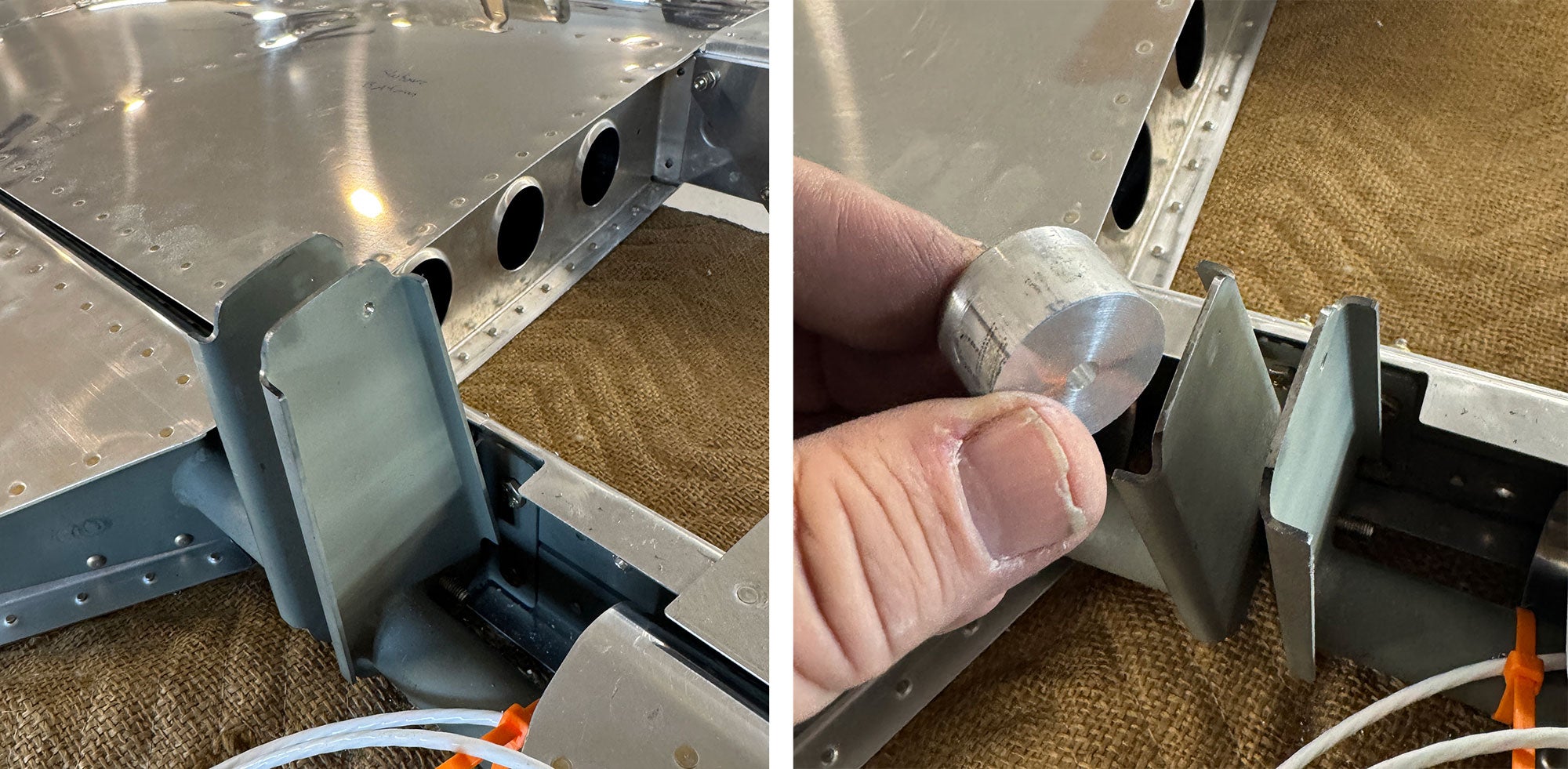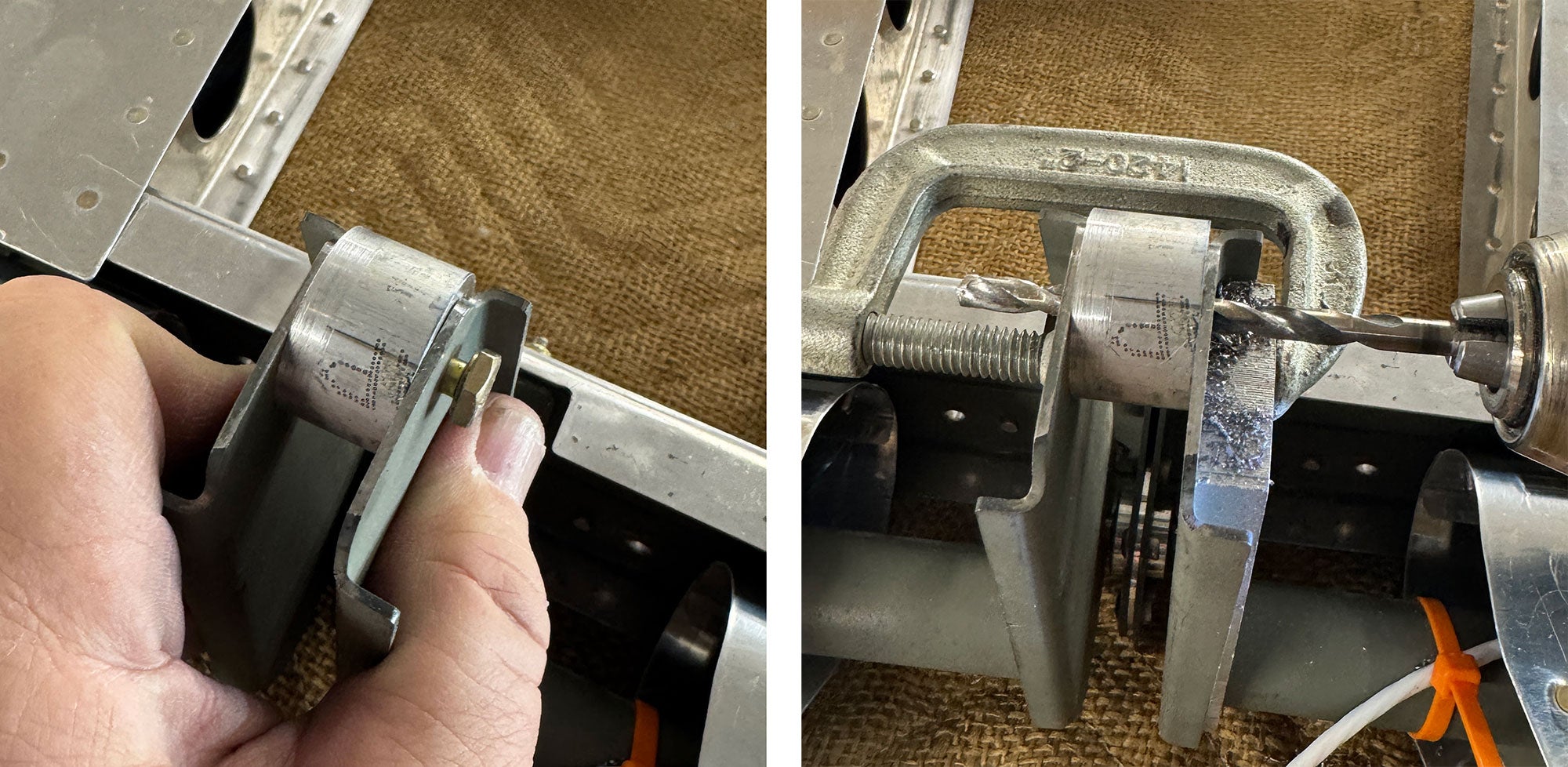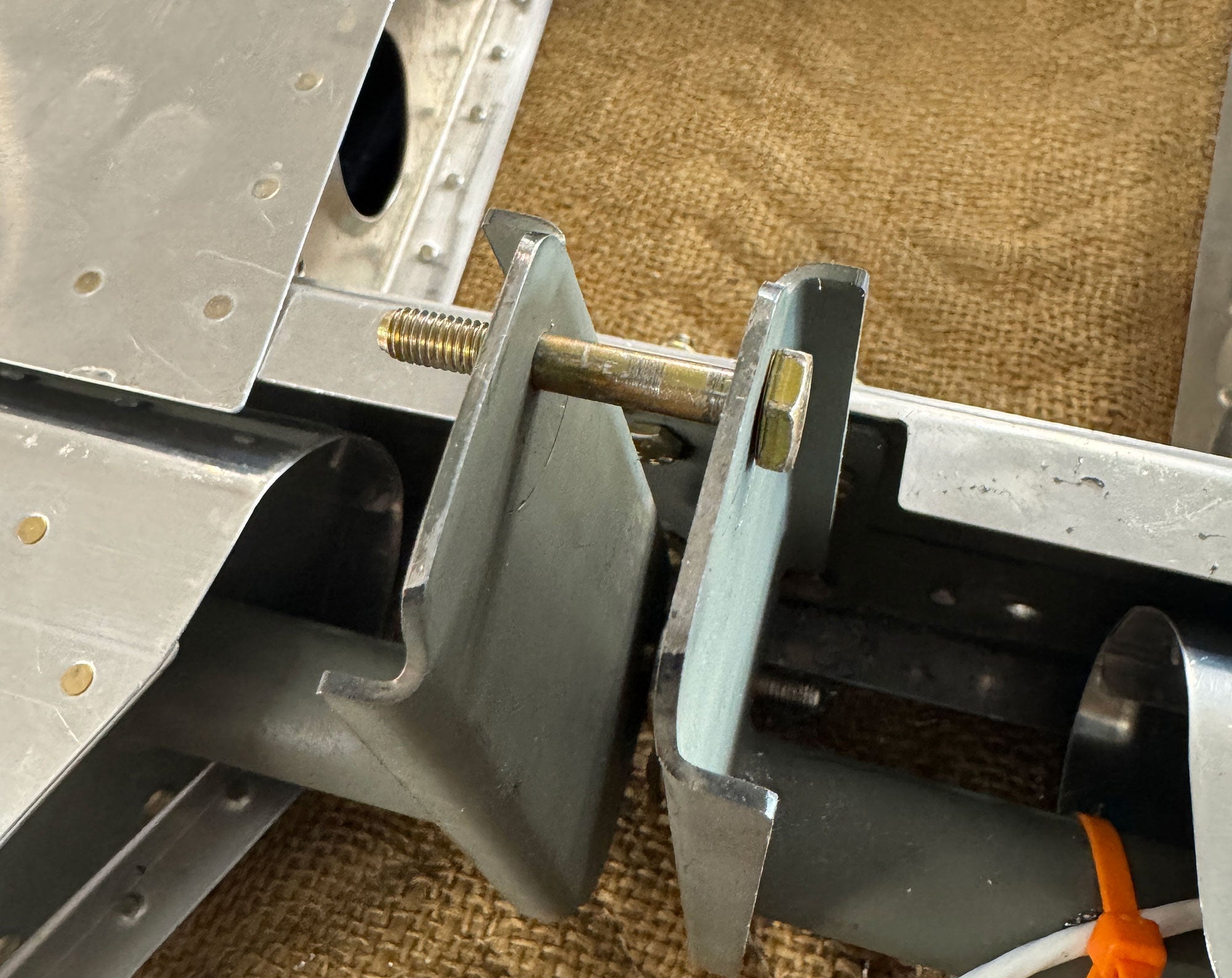Anyone who has built an RV-type airplane knows about the tricky task of drilling the elevator horns for the bolt that holds the big pushrod to the two elevators. Getting this hole right is important if you want to keep the elevators aligned, but it can be a daunting task drilling a precision hole through a small inspection opening. Many have done it successfully—myself included—but I am always looking for easier ways to do things that will provide equal (or better results).

The drill jig can be any shape – a cylinder was easy to make and drill on the lathe.
It was time to drill these two holes on our F1 Rocket project. The horizontal stabilizer was mounted, and the elevators had been hung and the hinge bearings adjusted so that there was free movement and no binding or free play. I had clamped the counterbalance arms to the stab to make sure that the two elevators were aligned, and started looking through that tiny inspection hole, planning how to drill a perfectly square hole in both elevator arms. Then it hit me—with the elevators mounted to the stabilizer and clamped in place, there was nothing stopping me from simply removing the whole assembly and putting on the bench, with the arms facing up!

Like most “off plans” ideas, I thought about it overnight, and couldn’t come up with a reason it wouldn’t work. We pulled the assembly and flipped it upside down. I then machined a spacer/drill block out of scrap aluminum 1” rod, and drilled a #12 hole in the center on the lathe. The plans called for the hole in the arms to be 3/8” up from the bottom, and 3/8” back from the leading edge, so I marked and drilled this on one side. I then ran a bolt through it with the jig block in between the two arms, and clamped it in place. The bolt came out, a drill went in, and the second arm was drilled perfectly to match the first – without having to work through that inspection hole!
The total job took half an hour, and the horizontal tail was ready to re-mount. Easy and accurate—just what I was looking for!















I have done that on an RV-4 and an RV-9A. Much easier off the airframe.
The problem I had was that the elevator horns were not parallel to each other or the longitudinal axis. You can’t just clamp something in between them to force them straight, because it binds the hinge bearings. I managed to bend the horns so they were straight and parallel, but the job was… interesting…
I agree Lars – you have to have build the elevators fairly straight. If the horms have to be pulled into alignment when you put the drill block in place, you’ll likely have binding. But…. the same thing will be true if you do it in/on the fuselage, and will be harder to see/diagnose.